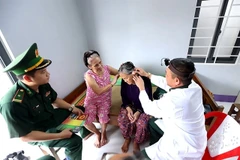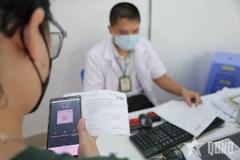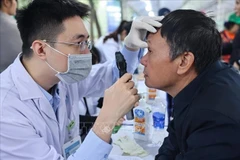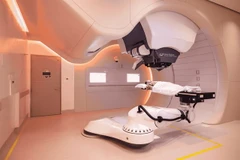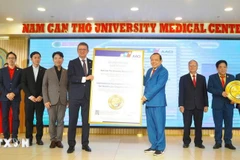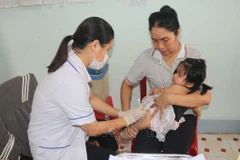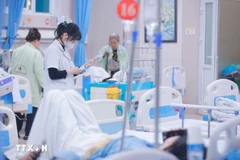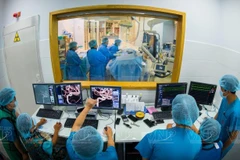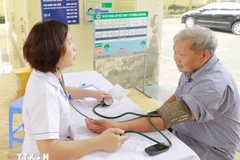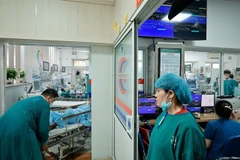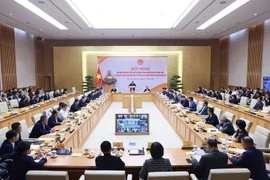Hanoi (VNA) – Hospital are ramping up efforts to apply electronic medical records (EMRs) following Prime Minister Pham Minh Chinh’s Directive No. 07/CT-TTg, which demands the acceleration of a national plan to develop resident data, electronic identification, electronic authentication systems serving national digital transformation between 2022 and 2025, with a vision extending to 2030.
The Ministry of Health (MoH) has identified the nationwide rollout of EMRs as a focal task, placing full responsibility on heads of agencies and units to ensure timely implementation. It urged all hospitals with inpatient beds, both public and private, to complete the transition by September 30, 2025.
EMRs at the heart of healthcare reform
The MoH recently approved a decision outlining a detailed roadmap for EMR deployment. Vietnam is currently home to nearly 1,500 public hospitals, over 380 private hospitals, and around 70,000 private clinics.
Under the Prime Minister’s directive, the ministry is tasked with ensuring that 100% of hospitals adopt EMRs, with interconnected data systems between local (district and provincial) facilities and central hospitals overseen by the ministry. The goal is to make use of the shared data to streamline diagnostics, reduce unnecessary tests, and enhance patient care. All must be completed by September 2025.
In mid-March, the Minister of Health also issued directions urging digital transformation across the health sector. It encouraged leadership at all levels to set the example and lead with a forward-thinking and innovation-first mindset.
For healthcare providers, this includes prioritising investment and resources for EMRs, integrating personal health records into the national VNeID Platform, and enabling electronic referrals, appointment scheduling, and the re-use of diagnostic results across different care levels.
All 63 provincial-level health departments have now updated information about local medical facilities and practitioners on the National Management System. Every hospital in the country—public or private—has deployed hospital information systems (HIS), laying the digital foundation for EMRs.
Significant progress has been made: many facilities now provide computers for all clinical staff and offer free Wi-Fi to patients and visitors. Currently, 39% of healthcare facilities have cybersecurity systems in place. Importantly, 100% of hospitals now have their HIS digitally linked with the Vietnam Social Security, ensuring seamless verification of health insurance claims.
Resources mobilised, milestones achieved
As of April, 153 healthcare facilities have confirmed full EMR deployment, with no further use of paper records. Notably, two provincial departments of Phu Tho and Bac Ninh have successfully implemented EMRs across all hospitals under their management.
In terms of payment, the transition to cashless billing has seen dramatic progress over the past five years. Currently, 71% of facilities offer electronic payment options, including 31% via direct banking connections, 10% through the National Public Service Portal, and 15% via other digital platforms. However, 29% of hospitals still rely on cash transactions.
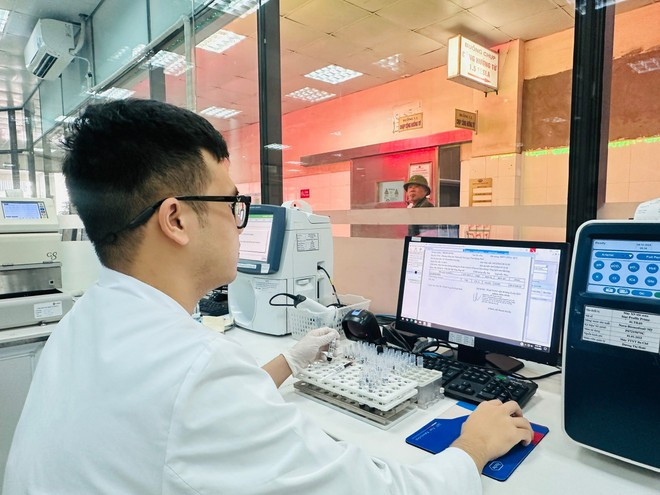
(Photo: VietnamPlus)
According to Associate Professor Dao Xuan Co, Director of the Hanoi-based Bach Mai Hospital – one of Vietnam’s largest hospitals with 3,600 beds and over 4,000 staff, the hospital receives 7,000–10,000 outpatients and treats approximately 4,000 inpatients each day.
Following government directives, Bach Mai has made digital transformation a top priority, mobilising resources to become the first Tier-1 hospital under the MoH to fully implement EMRs. Since November 15, 2024, the hospital has been operating completely paperless.
Co highlights the tangible benefits – reduced errors from illegible handwriting, instant access to patient histories, and more accurate diagnoses and treatment plans. Digitisation also eliminates physical paperwork, freeing up storage space and cutting costs.
By moving away from printed test results of X-ray, CT and MRI scans, as well as paperwork for lab requests and discharge summaries, Bach Mai saves nearly 80 billion VND (3 million USD) annually, which is then reinvested into further technological upgrades.
A similar trend is taking place at Thanh Son district’s medical centre in Phu Tho province. Previously, a single paper-based medical record could use up to 50–60 A4 sheets. With EMRs, that has dropped to just 4–5 sheets. Given that the centre treats around 22,000 inpatients each year, the volume of printed paper has been reduced from 1.1 million sheets to just a tenth of that.
On April 11, the MoH published its first unified coding list for diagnostic and laboratory indicators, covering areas such as haematology, biochemistry, pathology, and microbiology. The list includes 2,964 standardised indicators and will be adopted across all public and private medical facilities nationwide.
This move is a crucial step towards the interoperability of lab results between institutions, minimising duplicate testing, cutting patient costs, and improving efficiency in line with national healthcare reform goals.
Health Minister Dao Hong Lan reaffirmed that digital transformation is playing a transformative role across society, and healthcare is no exception. Information technology is no longer optional, it has become an essential tool for delivering modern, effective, and patient-centric care, she stated./.





